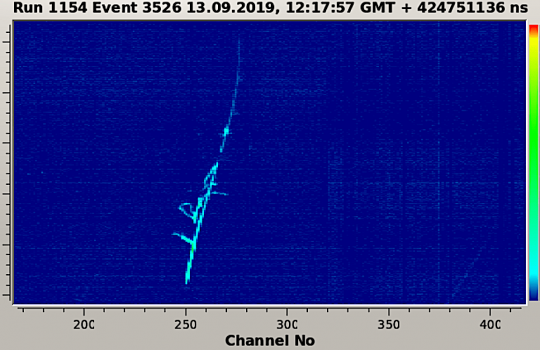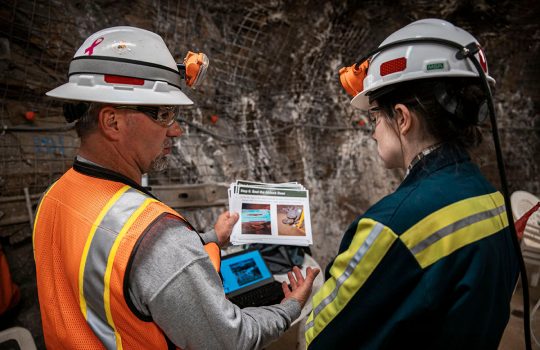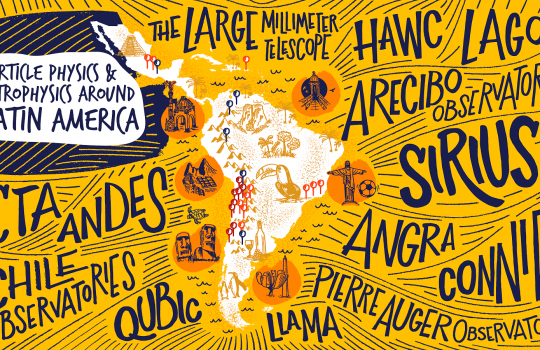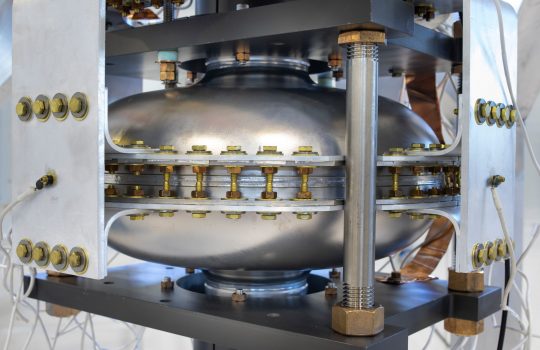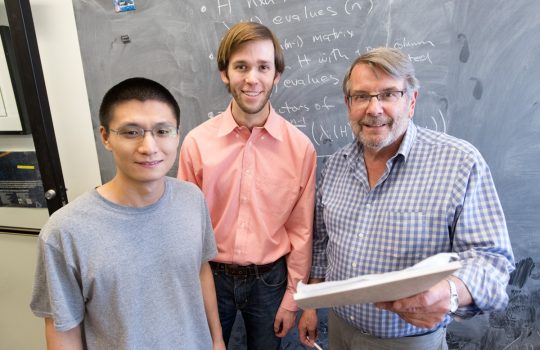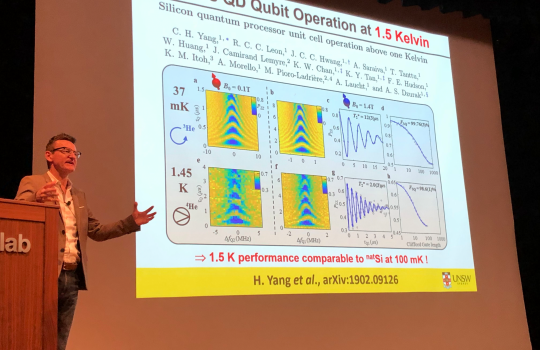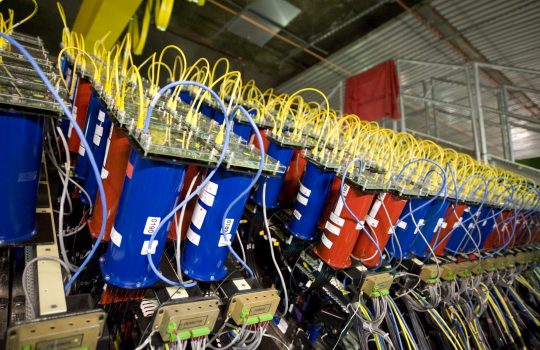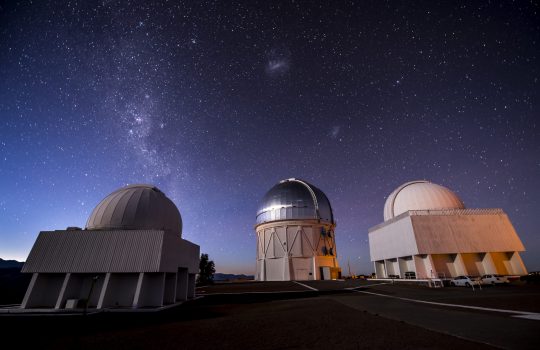Tests start at CERN for large-scale prototype of new technology to detect neutrinos
Scientists working at CERN have started tests of a new neutrino detector prototype using a promising technology called “dual phase.” If successful, this new technology will be used at a much larger scale for the international Deep Underground Neutrino Experiment, hosted by Fermilab. Scientists began operating the dual-phase prototype detector at CERN at the end of August and have observed first tracks. The new technology may be game-changing, as it would significantly amplify the faint signals that particles create when moving through the detector.

